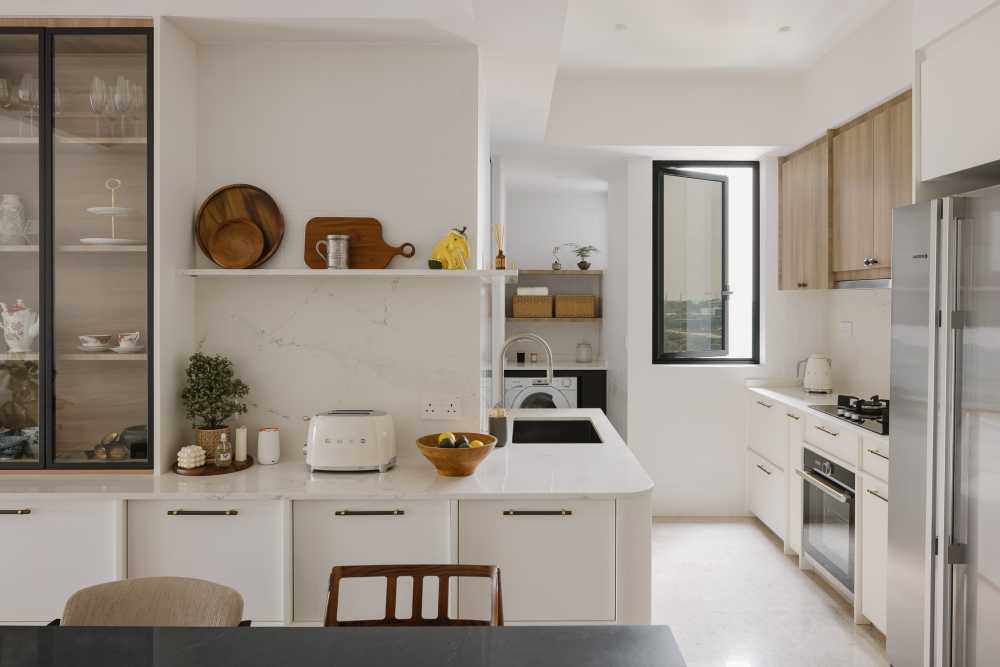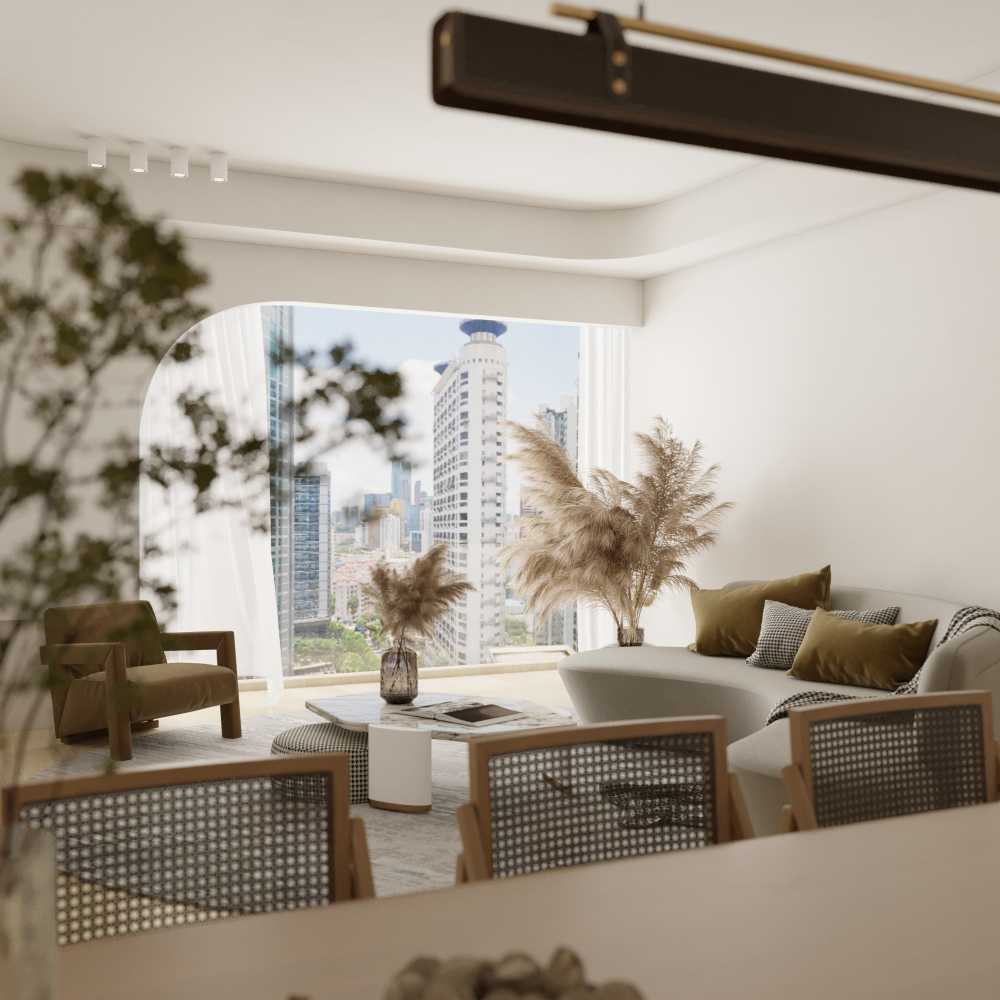Renovating With Purpose: Incorporating Mindfulness Into Interior Design
In the hustle and bustle of our daily lives, it’s easy to overlook the impact our surroundings have on our well-being.
Our homes, where we spend a significant portion of our time, should be spaces that promote mindfulness, tranquility, and a sense of connection.
This is where mindful interior design comes into play, offering a way to transform your living spaces into havens of peace and purpose.
Understanding Mindful Design
Mindful design is not merely a passing trend in interior design; it represents a profound shift in the way we approach our living spaces.


At its core, mindful design is a philosophy that centers around intentionality and purpose. It invites you to be thoughtful and deliberate in every design decision, transforming your home into a reflection of your inner self and the values that matter most to you.
In the context of mindful design, your home becomes more than just a physical structure.
It becomes an extension of yourself, a canvas upon which you paint your unique story.
It’s about creating spaces that resonate with your soul, where every element is carefully chosen to evoke emotions, memories, and a sense of belonging.
In Singapore, where living spaces can be compact, making the most of every square inch is crucial.
Mindful design provides a solution by helping you optimize your space, making it both functional and aesthetically pleasing.
The Role Of Intentionality In Mindful Design
Mindful design begins with intentionality. Every design decision, from the choice of colors to the placement of furniture, should serve a purpose.
For instance, we talked about how living spaces in Singapore tend to be compact.
However, with mindful design, you can transform even the most confined areas into inviting, comfortable, and visually spacious retreats.
One of the most effective ways to create a sense of space in a small space is through careful color selection.
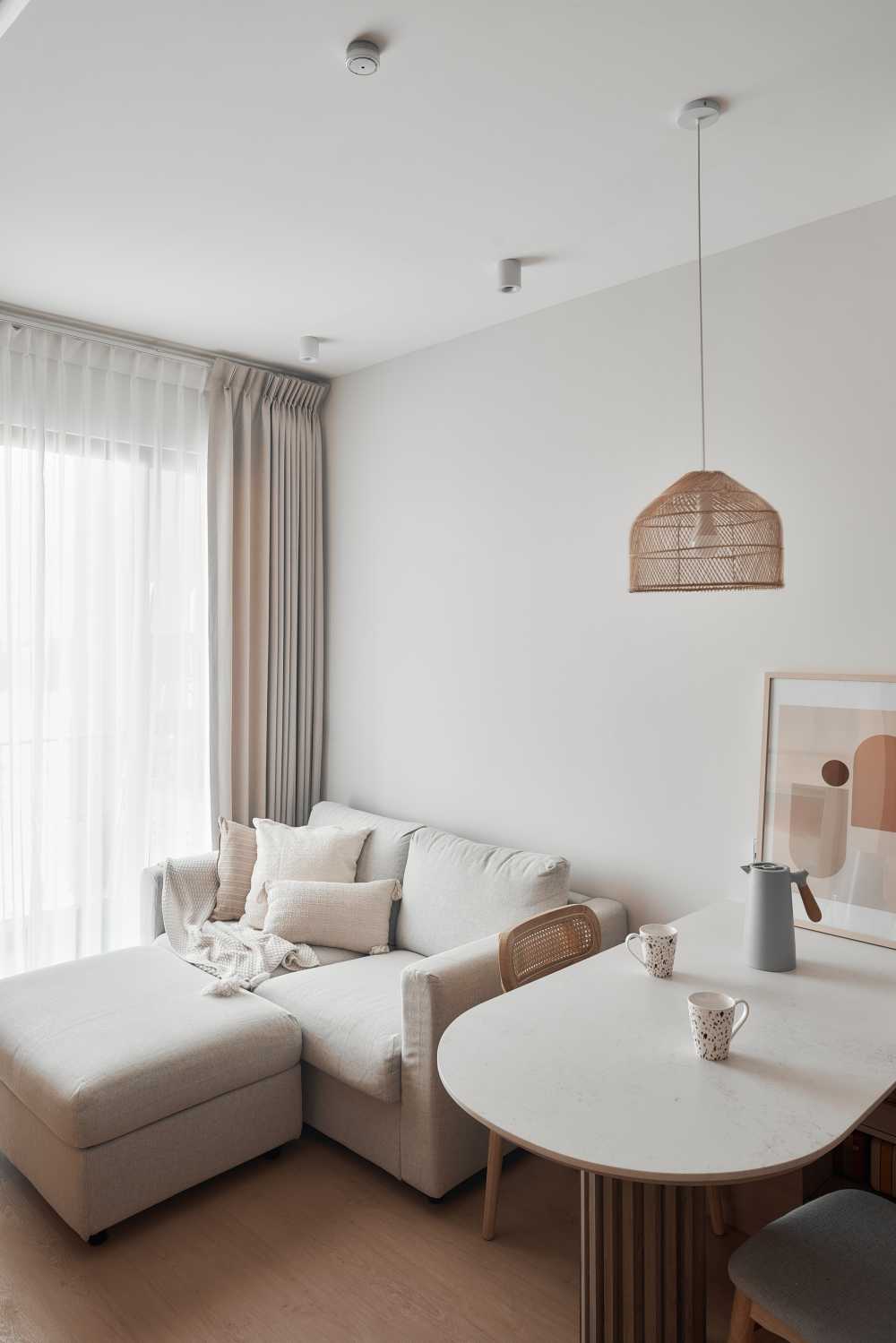

Stirling Residences ($22,000) by Starry Homestead Pte Ltd
Light, neutral colors such as whites, creams, and soft grays can work wonders. These hues reflect light, making the room feel brighter and more open.
Another tip is to keep the color palette consistent throughout the space. This way, you establish visual continuity, which further enhances the illusion of spaciousness.
Colour palettes aside, mindful design also extends to the layout and placement of furniture.
Avoid overcrowding the room with too many pieces, as this can make it feel cramped.
Instead, opt for a minimalist approach with just a few well-chosen furnishings that allow for easy movement within the space.
Consider arranging furniture to maximize open areas, ensuring that traffic flows smoothly.
Creating Spaces For Mindfulness In Your Home
In a bustling city like Singapore, it’s essential to create spaces within your home that encourage mindfulness and allow you to reconnect with nature.
How do you do this?
One way is by incorporating natural materials into your interior design.
Firstly, wood is a versatile and timeless material that brings warmth and a touch of nature indoors.
Consider adding wooden furniture, flooring, or even wall panels to your home.
The texture and grain of wood will add a sense of organic beauty to your space, and hopefully create a grounding effect.
Natural stone elements, such as granite countertops, marble accents, or even a stone feature wall, can also provide a sense of groundedness and durability to your home.
Stone evokes a connection to the earth’s elements, fostering a sense of serenity and stability.
Beyond materials like wood and stone, consider introducing natural textures into your decor.
Rattan furniture, jute rugs, or seashell-inspired decor can add tactile richness and further connect your interior to nature.
The sound of flowing water, like a tabletop fountain or wall-mounted waterfall, can also create a serene and meditative atmosphere.
The gentle, soothing sound can help drown out urban noise, allowing you to find tranquility within your home.
Mindfulness And Minimalism
In the quest for a mindful home, one question often arises: Does creating a mindful space necessitate adopting a minimalist lifestyle?
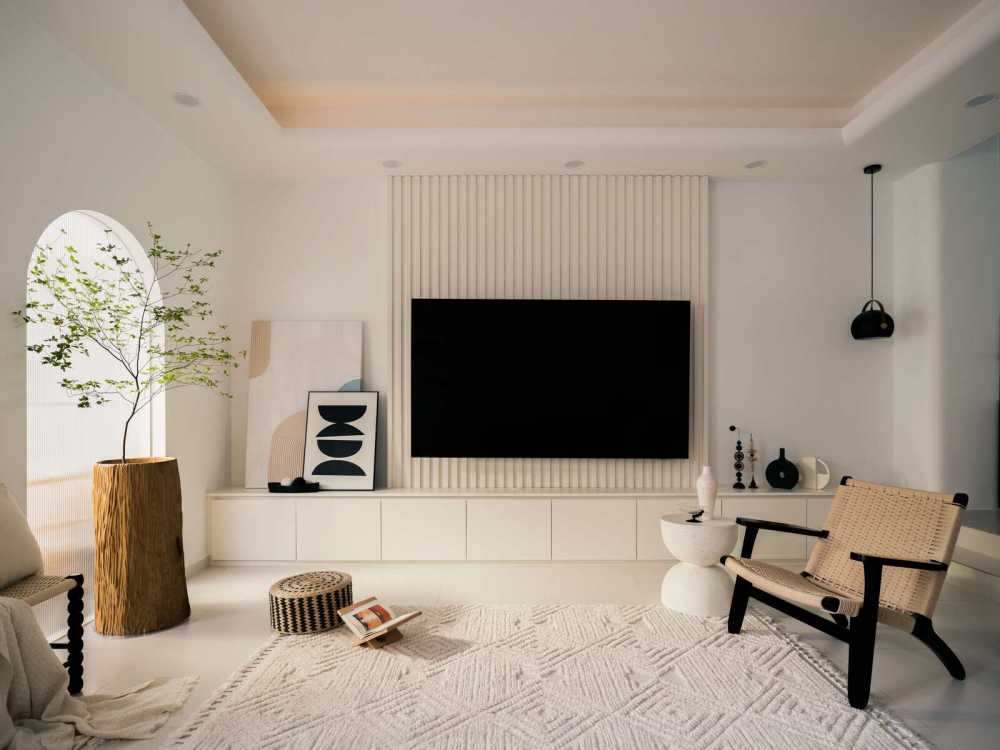

Sunbird Road 4 ($185,000) by Okaeri Studio
While mindfulness and minimalism share common principles of intentionality, purpose, and simplicity, they are not one and the same.
Instead, they complement each other, and finding the right balance between the two can help you achieve a more mindful living environment tailored to your individual needs and preferences.
To dive deeper into this, minimalism is a lifestyle choice characterized by the deliberate reduction of possessions and a focus on owning only what is essential and meaningful. It emphasizes decluttering, simplifying, and living with less.
Bearing this in mind, minimalist spaces are typically characterized by clean lines, neutral colors, and a lack of excess.
Mindfulness, on the other hand, is a mental practice that involves being fully present and aware in the moment. It encourages conscious decision-making and an appreciation of the present.
When applied to interior design, mindfulness calls for intentionality in every design choice to create spaces that foster well-being and connection.
While minimalism encourages a reduction in physical possessions, mindfulness encourages a reduction in mental clutter and distractions.
These principles can coexist harmoniously, but it’s essential to strike a balance that works for you.
For example, minimalist design principles can be incorporated into your mindful home without the need for extreme simplicity.
Embrace clean lines, open spaces, and a clutter-free environment, but don’t be afraid to add personal touches that resonate with your mindfulness practices.
Minimalism may be an inspiration, but your space should ultimately feel like an authentic expression of your personality and lifestyle.
Remember that achieving a mindful home is about fostering a sense of well-being and connection, not adhering to rigid standards of minimalism.
Prioritize practices like meditation, reflection, and intentionality over strict design rules.
Controlling Natural Light For Mood Adjustment
Singapore’s climate offers abundant natural light, which can be both invigorating and overwhelming.
To create a mindful space, consider ways to control and manage this light effectively.
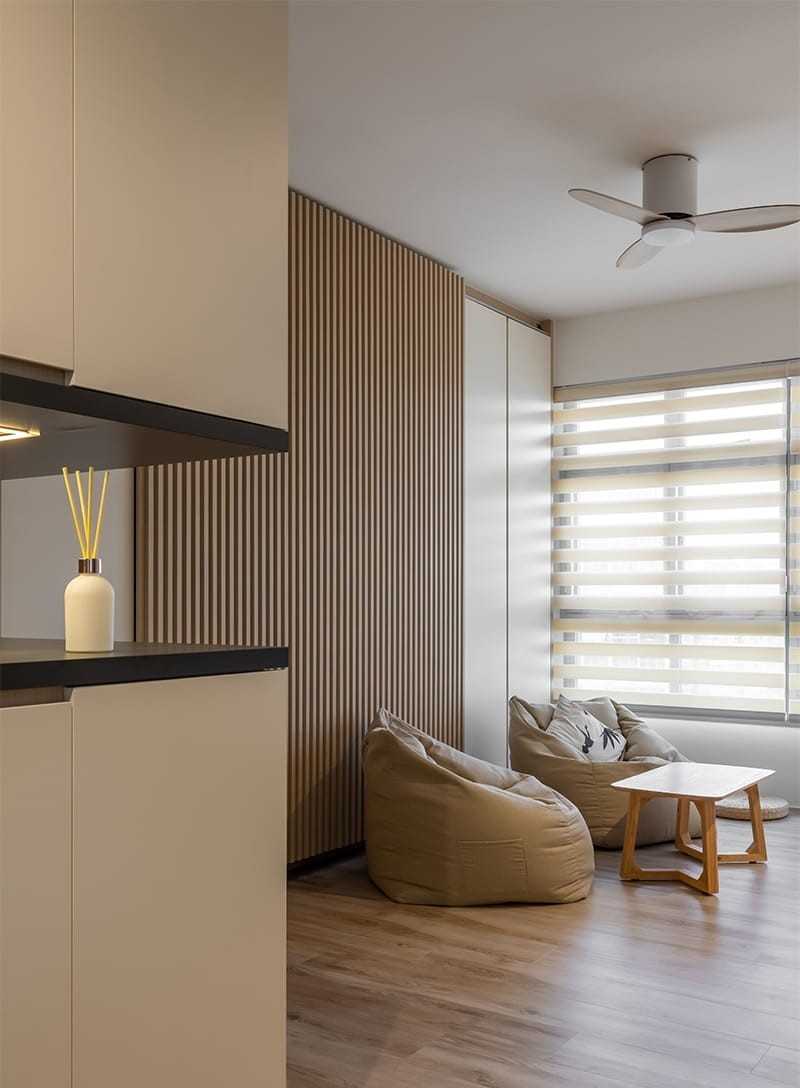

622B Tampines ($50,000) by JP Atelier Pte Ltd
Firstly, invest in high-quality curtains or blinds so that you can have precise control over the amount of natural light entering your space.
On bright, sunny days, you can draw the curtains partially to diffuse the light, creating a soft and gentle ambiance.
On the other hand, during the evening or when seeking privacy, fully closing the curtains can create a cozy and intimate atmosphere.
In addition to controlling natural light, consider incorporating layered artificial lighting into your interior design.
Soft, warm-toned lighting fixtures like sconces or pendant lights can create a soothing atmosphere in the evenings, promoting relaxation and mindfulness.
A Final Word On Incorporating Mindfulness Into Interior Design
In conclusion, mindful interior design is not just about aesthetics; it’s about creating spaces that align with your values and promote well-being.
In the heart of the urban jungle that is Singapore, your home should be your sanctuary.
So, whether you’re planning a renovation or simply looking to make some changes, remember to infuse intentionality and purpose into every decision.
Ultimately, mindful interior design empowers you to shape your living space into a sanctuary that truly resonates with you.
Want to check out the best interior designers in Singapore as rated by fellow homeowners across? Explore Hometrust today!
Renovating soon? Let Hometrust recommend the best interior designers.
If you are reading this, you are probably wondering how you can create your dream home.
Here’s the thing, everyone’s needs and requirements for their home renovation is different. A designer that may work for someone else, may not quite work for you.
At Hometrust, we’re here to help match top rated designers, recommended by past homeowners to you through our data-driven and matching algorithm.
Whether you are looking for partial renovation or a full fledge overhaul, we’ll be able to recommend you top designers to match your renovation requirements and lifestyle.
Recommendations and free and you can simply start by helping us understand your needs below!
Get RecommendationsRenovate safe!
The Hometrust Team

